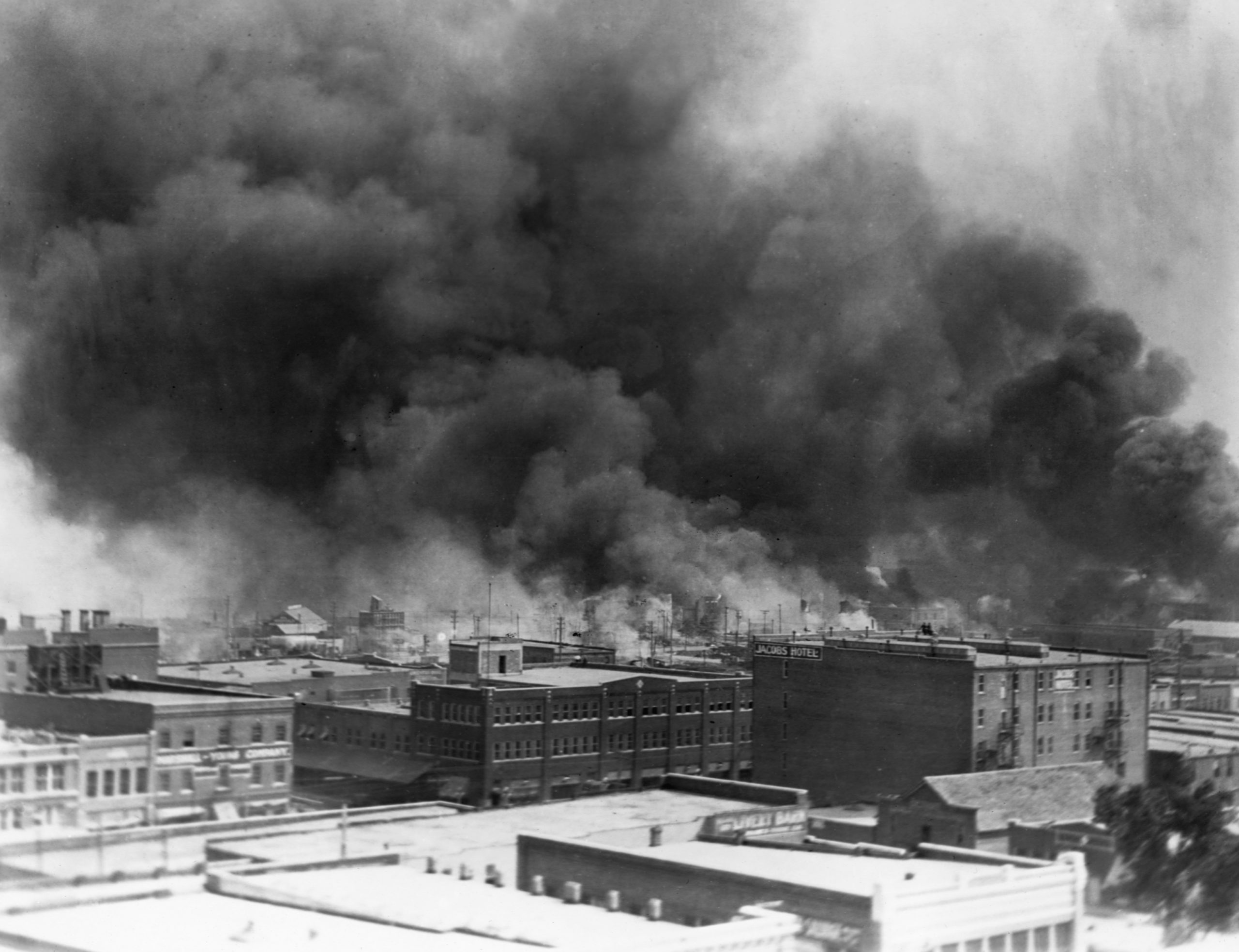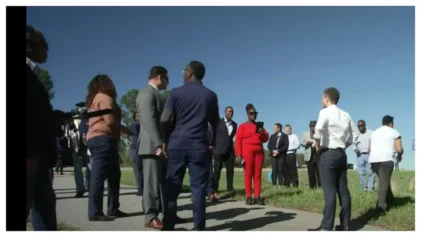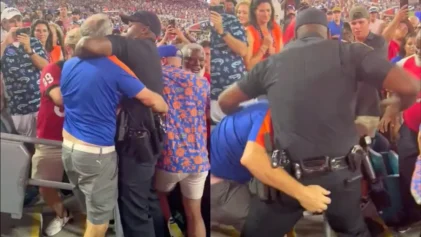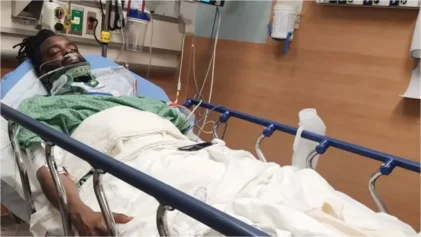Eureka!
Archaeological experts believe they have found a possible mass grave site from the 1921 Tulsa Race Massacre, although it’s unclear how many bodies may lie beneath.
It was geophysical scanning that led experts to two spots at the Oaklawn Cemetery that could hold the remains of those who were killed in the deadly mobb violence. The surveys confirmed suspicions that one of the areas might be a mass grave.

Thousands of homes, schools and buildings were burned to the ground during the massacre of 1921 in Tulsa, Oklahoma. (Photo: © CORBIS/Corbis via Getty Images)
“I am as confident as I can be in the results that this is a very big candidate with something associated with the massacre,” Scott Hammerstedt, senior researcher for the Oklahoma Archeological Survey, said at a public hearing in Tulsa on Monday.
Researchers also discovered a trench underneath the soil, measuring about 30 by 25 feet. It was these “anomalies” that led researchers to believe there could be a mass grave site, but they’re still investigating.
The discovery comes more than a year after Tulsa Mayor G.T. Bynum launched an investigation into the rumored mass graves and proposed using $100,000 from the city’s budget for the search.
“If we can identify a place where there are bodies, we have a responsibility to look into that,” Bynum told local station KJRH at the time.
Tulsa’s Greenwood District, better known as Black Wall Street because of its thriving Black-owned businesses, was burned to the ground on June 1, 1921. The catalyst? The violence was sparked by allegations that African-American teen Dick Rowland had assaulted a white woman.
News of the alleged assault spread fast, further fueling racial tensions in segregated Tulsa. Rowland was arrested, and word spread that an angry white mob was on its way to find and lynch him.
Dozens of Black men, many of them Word War I veterans, showed up to the courthouse that night to defend the young man, for fear of violence. There they were met by nearly 1,500 armed white men.
Things soon reached a fever pitch as the groups clashed and gunfire was exchanged. The day-long attack on Greenwood had begun. Angry whites pillaged the African-American community, setting fire to dozens of homes and businesses.
Olivia Hooker recalled the day a group of white men ransacked the homes her family and neighbors, destroying everything in sight.
“It was a horrifying thing for a little girl who’s only 6 years old, trying to remember to keep quiet, so they wouldn’t know we were there,” Hooker told NPR’s Radio Diaries before her death in 2018.
She was 103 years old and the last known survivor of the Tulsa Race Massacre.
In the end, white mobs had leveled more than 1,000 homes and businesses, torching libraries, movie theaters, schools and even churches. The death toll was reported at 35, but historians believe the number of victims reached well into the hundreds.
Photojournalist Kavin Ross said he’s glad details of the tragic event, which isn’t often talked about, are finally coming to light. He described it as a little-known part of Tulsa’s history.
“For decades it was hush-hush,” Ross told CBS News in a recent interview. “Even some of the survivors that I interviewed, they were quiet and telling me, ‘Oh, and the white people … ‘ They were whispering in their own homes because they were brought up not talking about what happened.'”
At Monday’s hearing, forensic pathologist Phoebe Stubblefield said the number of bodies in the trench could be anywhere from 10 to 100. However, she said it’s unlikely they’ll be able to identify any of the remains.
“We just don’t know what level of preservation we’ll get,” Stubblefield said, according to NBC News.
Additional surveys of the ground could lead to excavations, which would require several permits. For now, researchers are working on securing the sites until then.
Moving forward, a public oversight committee is expected to draft a plan for the next steps in the investigation.
Watch more in the clip below.


